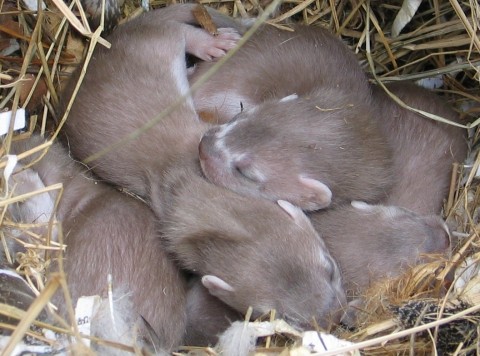The Ultimate Pest-buster?
If asked to name New Zealand’s public enemy number one, the first thing that springs to my mind is our most reviled Australian immigrant – the possum.
European immigrants to NZ tried to introduce these critters not once, but twice (in 1837 & 1858) to establish a fur industry – and then voila, their population exploded. Now, New Zealand is home to over 70 million possums. In Australia, they’re a protected species.
Each year, pests like possums, rats, stoats and ferrets eat through acres of our native forests & under the cover of darkness perform night raids on our most imperilled species, such as our kokako & kaka.
The bill to save our native species, protect our forests and prevent the spread of bovine TB sits at around 100 million dollars a year.

Probably our most fecund pest- the stoat. Female stoats are pregnant for most of their lives, and can have litters of up to 12 young.
The success of these species lies partly in the fact that they sire millions of new offspring each year.
The stoat – our most fecund pest – is a case in point. Males are known to impregnate young stoats at 3-5 weeks of age, at a time when their eyes have yet to open. Before they even leave their nest, young females are often carrying the next generation of stoats (up to twelve in a litter) and will remain pregnant for much of their lives.
Compare this to our critically endangered kakapo: they generally only breed in years when their food supply (rimu) is in abundance, the males don’t reach sexual maturity till 5 years of age and their females only produce broods of three chicks. No wonder kakapo scientists are freezing their sperm.
In order to halt the rampant population growth of our pests, teams of fertility scientists have been studying our pests’ reproductive cycles for the past 20 years, in an attempt to quell their breeding success.
Genetically modified vector hosts, immuno-contraceptive vaccines & injections of hormone-disrupting chemicals are just a handful of the techniques are currently being tested & trialled.
And one such project looks like it has legs – a menopause-inducing pill is currently being trialled in Indonesia to affect the fertility of rice-paddy dwelling rats.
Currently NZ scientists are in the process of looking into modifying the pill with the American team that developed it so that it works on possums, stoats and ferrets. If successful, it will then be tested on non-target species such as birds, to ensure that it will not affect their reproductive cycle.
The beauty of this particular pill however is its easy distribution. There’s no need to drop the contraceptive repeatedly each year – it could be a one-hit wonder.
And unlike any of the genetic modification techniques trialled, this project will not have to undergo the scrutiny of the anti-GE lobby, so potentially it could be rolled out in a quick smart fashion (read: a decade).
Of course, there will be the naysayers who say that we’re meddling with nature, but given the rapid developments in fertility treatments in recent years – frozen embryos, pregnant men – feeding our pests with trialled, tested & targeted contraceptives may not seem like such an outlandish idea.
